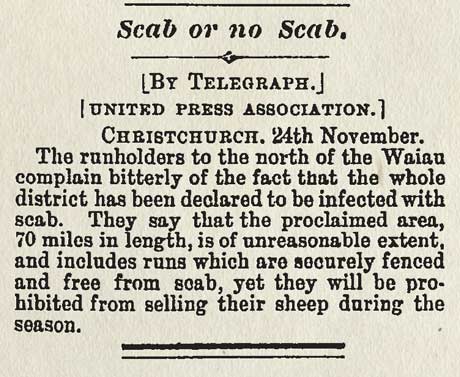
This notice in the Evening Post of November 1886 illustrates the powers which government employed to prevent outbreaks of sheep scab. An area has been declared infected, and stock are not permitted to move out of it. Farmers complained that they were unable to sell their sheep. Earlier in the century, provincial and central governments required the branding and dipping of sheep, and imposed harsh penalties on farmers caught with scabby flocks.
Te whakamahi i tēnei tūemi
National Library of New Zealand, Papers Past
Reference:
Evening Post, 25 November, 1886, p. 2
Permission of the National Library of New Zealand, Te Puna Mātauranga o Aotearoa, must be obtained before any re-use of this image.








Tāpiritia te tākupu hou